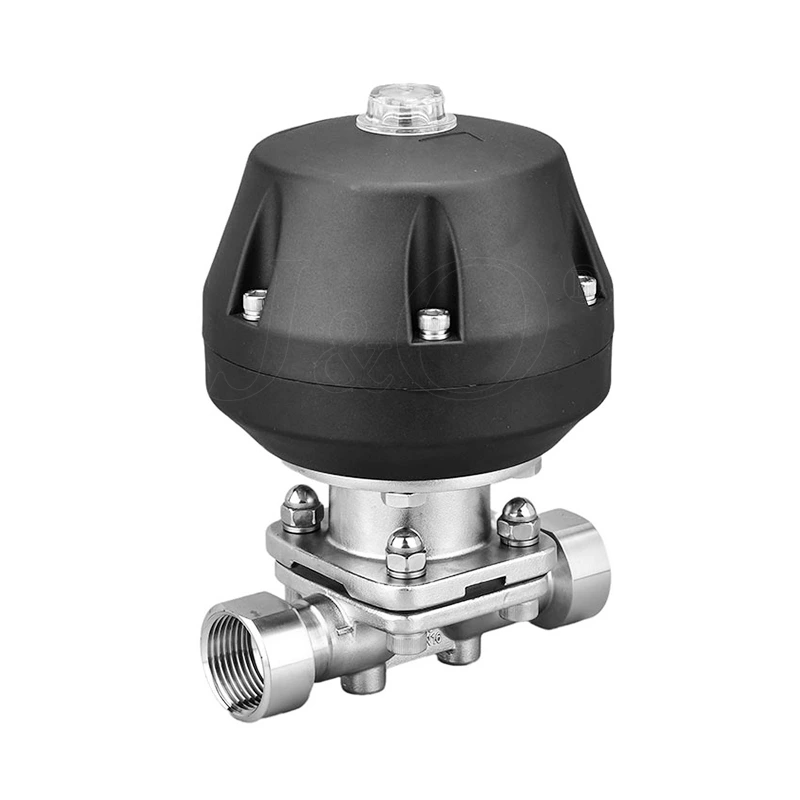How To Achieve Fluid Control With Manual Sanitary Diaphragm Valve
Sanitary Diaphragm Valve is a fluid control device that realizes the switching, regulation and cutoff functions of the fluid through manual operation. It is widely used in food, pharmaceutical, chemical and other industries, and has the advantages of good sealing, simple structure and long life.
1. Structure and working principle
The manual sanitary diaphragm valve consists of valve body, valve core, sealing ring, manual rod and other components. The valve body is a hollow cylindrical structure with a valve core and sealing ring installed inside. A manual rod is provided on the valve core, and the valve is opened and closed by rotating the manual rod.
When the manual rod is in a vertical position, the gap between the valve core and the valve body sealing ring is closed, and the valve is in a closed state; when the manual rod is rotated to a horizontal position, the gap between the valve core and the valve body is opened, and the fluid can flow through the valve.
The function of the sealing ring is to ensure the sealing of the valve and avoid fluid leakage. Commonly used sealing ring materials include fluororubber, silicone rubber, etc., which have the characteristics of high temperature resistance and corrosion resistance.
2. Fluid control process
The fluid control process of the manual sanitary diaphragm valve is mainly divided into three stages: opening, adjustment and cutoff.
In the opening stage, the gap between the valve core and the valve body is opened by rotating the manual lever, and the fluid begins to flow through the valve from one side. At this time, the rotation angle of the manual lever can be adjusted as needed to control the flow of the fluid.
In the adjustment stage, by continuing to rotate the manual lever, the valve opening can be changed to further adjust the flow of the fluid. Continuous flow regulation operation can be achieved through the rotation of the manual lever.
In the cutoff stage, by rotating the manual lever to a vertical position, the gap between the valve core and the valve body sealing ring is closed, and the valve is closed to cut off the fluid. This cutoff method can ensure the sealing of the valve and avoid fluid leakage.
3. Application fields and advantages
Manual sanitary diaphragm valves are widely used in food, pharmaceutical, chemical and other industries, mainly for the control of liquids, gases, powders and other media. Its application in the food industry is more special, because sanitary valves require that the part of the fluid in contact with the valve must meet the hygiene standards to ensure the hygiene and safety of the production process.
The advantages of manual sanitary diaphragm valves are mainly reflected in the following aspects:
1. Good sealing: The valve core and the valve body are sealed with a sealing ring to prevent fluid leakage.
2. Simple structure: Since the valve structure is relatively simple, it is relatively easy to repair and replace parts, which can improve the reliability and service life of the equipment.
3. Sanitary materials: The part of the valve that contacts the fluid is usually made of sanitary materials, which meets the sanitary standards and is suitable for fluid control in the food, pharmaceutical and other industries.
4. Strong corrosion resistance: The material used in the valve has good corrosion resistance and can adapt to the fluid control needs of various media.
The manual sanitary diaphragm valve realizes fluid control through manual operation, and has the advantages of good sealing, simple structure and long service life. It is widely used in food, pharmaceutical, chemical and other industries.
